Search Results for: lodi rules
Lodi Rules: Grow great grapes, make delicious wine, leave everything a little better than we found it
“May we farm in a way that meets the needs of today without compromising the ability of future generations to create their livelihoods.” – The LODI RULES motto.
Started in 2005, the LODI RULES certification program is a collective of growers who are focused on all thing’s sustainability. Many of these Lodi Farmers are 4th or 5th generation winegrowers who are focused on farming with the next 100 years in mind. We at Musto Wine Grape, are lucky enough to work with some of these amazing farmers – Mettler Ranch and Costamagna Vineyards. Look for the LODI RULES seal on the wine grape boxes this season.
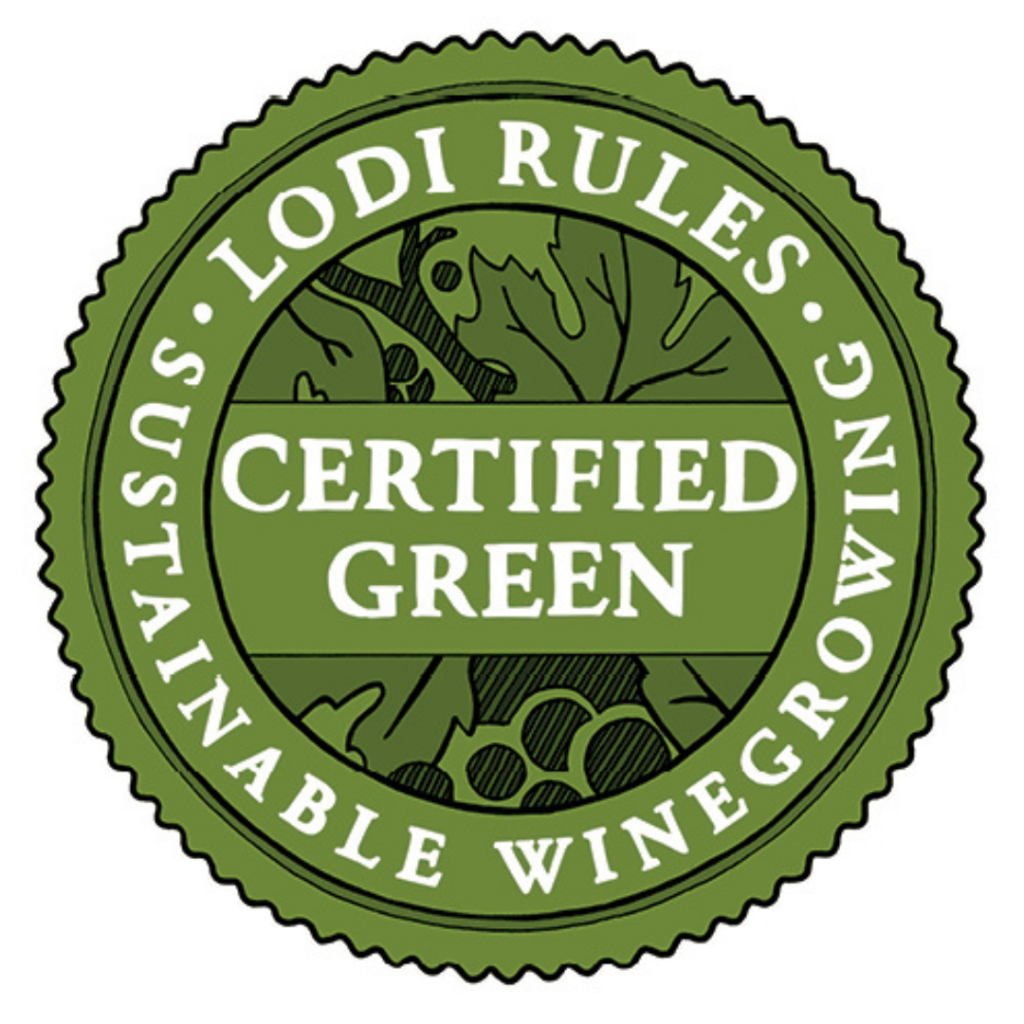
LODI RULES growers use a unique risk model to quantify the environmental and human impact of all pesticides applied in the vineyard. This model considers the dietary risks to consumers, as well as the acute risk to farm workers; small aquatic invertebrates; birds; and bees; and bees and beneficial insects. The Lodi region has documented a great decline in the use of high-risk pesticides since 1992, thanks to sustainability adaption by farmers.
LODI RULES Sustainability Standards Overview:
- Water: They carefully manage the quality and efficiency of their water, appreciating every drop
- Soil: They do their part to make sure that soil – the foundation of the vineyard- thrives for generations to come
- Community: They support the neighborhoods and schools around the farms
- Ecosystem: They encourage biodiversity and act as stewards of the land
- Pest Management: They us an integrated approach to pest management, which includes protecting beneficial insects and minimizing risks to birds, bees, water, and people
- People: They make sure that their vineyards are a safe and rewarding place to work
- Quality: They design farming practices to improve wine grape quality
- Generational Farming: They farm with the next 100 years in mind
How is certified sustainable farming different than organic and biodynamic?
- Organic and biodynamic farmers follow a set of practices related to the environment. Certified sustainable farming includes practices related to the environment, the people, and the business.
LODI RULES has over 100 sustainable practices included in its certification; with over 28,776 acres certified.
Over 150 wines bear the LR seal (Mettler Ranch & Costamagna being some of them!) A wine must contain 85% certified grapes to be the LR seal.
“Sustainability means leaving everything – people, places, etc.- as good as better than how we found it” – Kevin Philips, Michael David Winery
“When you drink a glass of wine made from LODI RULES certified grapes, you are supporting a farmer, a vintner, and an entire agricultural community that embraces their responsibility to care for the environment and the people”
This is a certification I think we can all get behind. Musto Wine Grape is grateful to be bringing in these grapes this season. If you are interested in grapes from the LODI RULES program, please give us a call at 877-812-1137 to pre-order. We are looking forward to assisting with your winemaking this fall!
Grapes Available from LODI RULES Certified Vineyards:
Mettler Ranch:
- Barbera
- Cabernet Sauvignon
- Grenache
- Merlot
- Pinot Grigio
- Pinotage
- Petite Sirah
- Rousanne
- Sangivoese
- Syrah
- Viognier
- Zinfandel
Costamagna Vineyards:
- Old Vine Primitivo
- Cabernet
- Merlot
- Sangiovese
- Barbera
- Aglianico
- Montelpulciano
- Mourvedre
- Nero D’Avola
- Sagrantino
Cheers,
Christina Musto-Quick
LODI RULES in Sustainable Farming
So, you want to learn more about Lodi wine region?
Are you are interested in California wine? If so, chances are you’ve been on the up and up with what’s happening in Lodi. A fantastic climate, strong traditional roots, and multiple generations of winegrowers are paving the way for sustainability measures. This has led to the creation of the LODI RULES seal, a green stamp appearing on the back labels of certified wines much as you would find a “USDA Organic” sticker. Click here to see which of our Lodi wine grapes are LODI RULES certified –> LODI RULES – Musto Wine Grape
As California’s original sustainable viticulture certification program, this seal is representative of a producer’s commitment to stewardship and respect for the land. It is a symbol of transparency in all things related to sustainable viticulture. The certification does not approve only one aspect of winemaking. It looks at the whole of the process, from farm to vine to bottle. While over 150 wines bear the LODI RULES seal, not just any winery can use this seal on their labels. The wines must have 85% certified sustainable grapes and be able to prove this. This then gets confirmed through third party accreditation and auditing.
There are two layers to the accreditation
1. Wineries must agree to “The Standards” of the certification, which include 100+ sustainability measures, in addition to following a unique pesticide risk model. The Standards are comprised of sustainability related to
- business
- human resources
- ecosystems
- soil
- water
- pests
2. Wineries must follow the Pesticide Environmental Assessment System (PEAS), used to gain an understanding of the impact of pesticide use within the vineyard. This is then used to generate a quantifiable environmental impact unit through which the effects and range of pesticide application can best be understood within the local ecosystem.
The Lodi AVA is setting a fantastic example by supporting the land that retains some of this country’s oldest vines. Lodi Rules is imparting a new standard in its meticulous regulations, leading other wine regions following suit after realizing how successful this certification has been for the region. Keep up to date with the progressive measures this winemaking region is taking to best care for their land, and be sure to look for the LODI RULES label on your next Lodi bottle. And this fall, be sure to find your very own Lodi wine grapes here at Musto Wine Grape Co.
Mettler Ranch – Musto’s Newest Vineyard in Lodi, CA
The Mettler Ranch
Musto Wine Grape is excited to announce their newest vineyard addition, the Mettler Ranch. The Mettler family has been farming wine grapes since the 1770’s in California. They focused their vineyard growing in Lodi in the 1800’s. Their family is now in its eighth generation of wine grape growing, with the 6th and 7th generation both recipients of the Agricultural Hall of Fame. It’s safe to say that vineyard farming is in their blood.
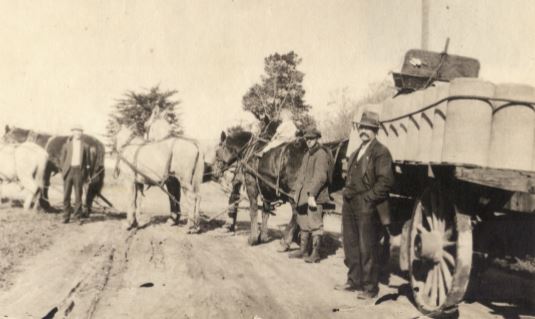
Regardless of their history, the Mettler family is constantly introducing new and progressive practices to create high quality wine grapes. They farm all of their vineyards sustainably (via LODI RULES) and as organically as possible; with certain blocks being certified organic by the CCOF (California Certified Organic Farmers). They use integrated pest management, cover crops, composting; and disease control through trellising, shoot positioning and leaf removal. The Mettler’s believe in farming the land for healthy vines and consistent wine quality.
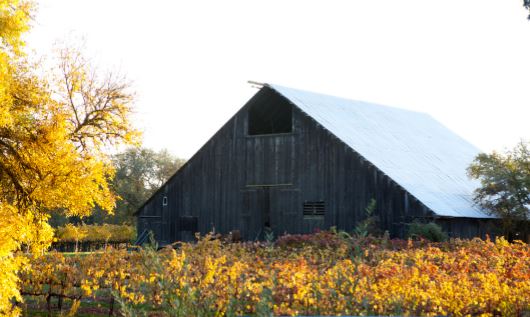
Organic Farming at a Glance:
Soil:
- Building organic matter within the soil is key to organic farming. You must feed the soil in order to feed the plant. The balance of the soil structure is critical not only in organic farming but to the overall health of the vine.
- Cover crops in vineyards are used to fix nitrogen and soil tilth. They create a habitat for beneficial insects and reduce erosion. Cover crops can also be helpful in weed control, and reduces air pollution by keeping dust down in the vineyards
- Use of compost on the vineyards floor if needed.
Disease Control:
- Prevention is key
- Modern trellising, shoot positioning, and leaf removal allow sunlight penetration and air flow into the vine’s canopy, greatly reducing mildew pressure.
Pest Control:
- Organic farmers must encourage a healthy ecosystem; to include and encourage predatory insect species, which eat pests
o By not using pesticides, beneficial insects remain in the vineyards. - Owl boxes placed in vineyards create a natural form of pest control
Weed Control:
- Mechanized in-row cultivator
- Hand hoeing
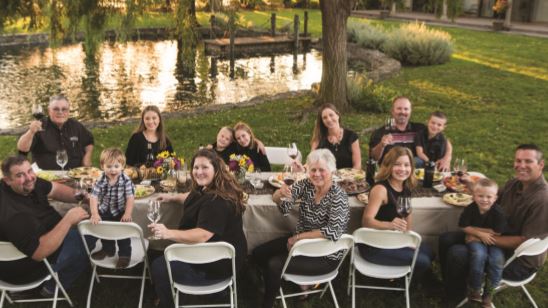
The Mettler family farms over 800 acres in the Lodi Appellation, some of which date back to their family’s original properties which are over 100 years old. In keeping with their progressive nature, they were the first to introduce French clones in the Lodi region. The family is very focused on producing wine grapes that make consistent and richly crafted wines.
PS- you might have noticed Berton Costamagna from Delta Packing (another one of our Lodi wine grape providers) in the Mettler family photo. This is because Berton is married to Kelli Mettler (now Costagmagna). Kelli is head of Wine Sales for her family’s winery. You might have met Kelli and Berton at our last Winemaker Competition Celebration. As a family run business, we at Musto Wine Grape love being able to work with other growing family businesses. If you visit Mettler Vineyards you’ll see their wine dogs and next generation running around in the vineyard, including Berton and Kelli’s son Caden.
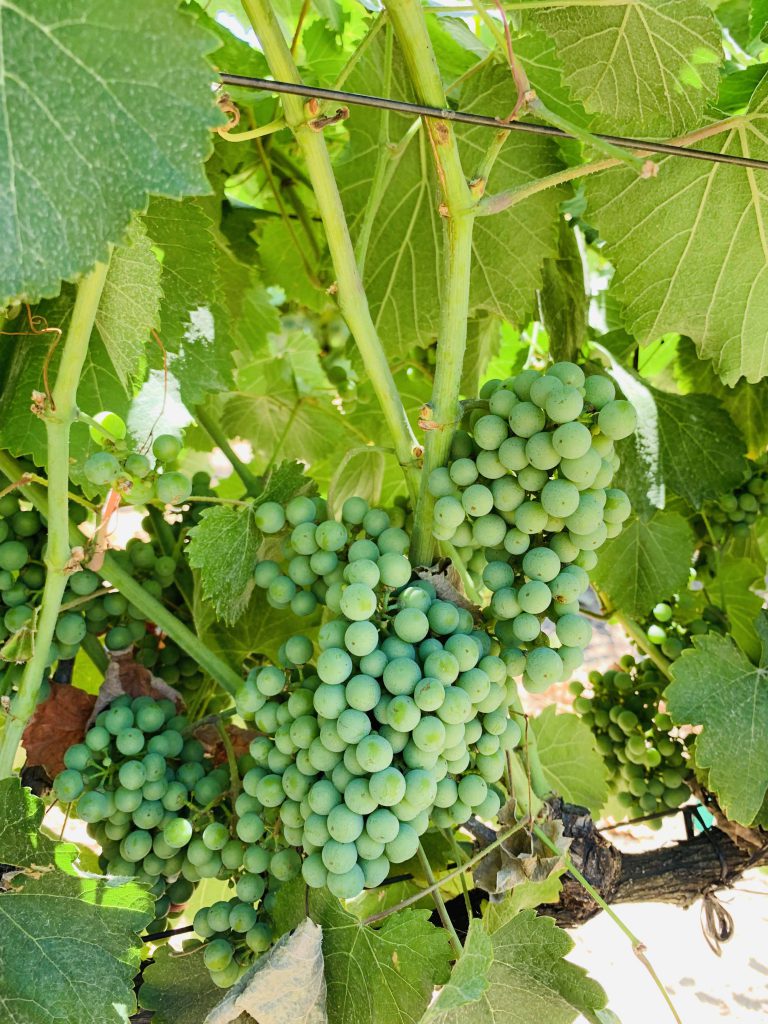
Wine Grape Varieties Available:
- Pinotage
- Grenache Noir
- Merlot
- Petite Sirah
- Syrah
- Cabernet Sauvignon
- Zinfandel
- Sangiovese
*All grape varieties are available in 36lb cases or in frozen must by request
The Mettler Vineyards:

The Mettler Vineyards are located in Lodi’s Mediterranean Climate. Warm, dry summers, and cool moist winters. The dry warm summer days allow Lodi grapes to develop ripe fruit flavors while the distinctive breezes maintain the natural acidity for structure and complexity in the finished wines.
Mettler’s Wines of Distinction:
The Mettler family has their own winery located in Lodi, CA. Their winemaker, Adam Mettler recently won Winemaker of the Year from Wine Enthusiast. He creates award winning wines for many wineries in Lodi, including his family’s winery.
Awards Received:
- Cabernet Sauvignon: Red, velvety and complex with true varietal characteristics
- 92 Points – Wine Enthusiast 2019
- 91 Points – Wine Enthusiast 2020
- Petite Sirah: Deep and layered with concentrate flavors and excellent balance
- 94 Points – Wine Enthusiast 2019
- #33 of the Top 100 Wines of 2019 – Wine Enthusiast
- 92 Points – Wine Enthusiast 2020
- Old Vine Zinfandel: Hearty and full bodied with a genuine “zin” personality
- 91 Points – Wine Enthusiast (Feb. 2020)
- 92 Points – Wine Enthusiast (April 2020)
For more information regarding the Fall Harvest please feel free to contact us at sales@juicegrape.com or give us a call at 877-812-1137. We are looking forward to helping you with your next great wine!
2023 Harvest Report

Every year we work to bring you the highest quality products at the best prices. This season we have done just that. We have some new vineyards being added to the portfolio that will knock your socks off! And there will be new wine grapes available from the high-quality, reliable sources you’ve come to know and love.
Let’s get started with the Harvest Report!
To keep up to date on harvest dates check in with us via sales@juicegrape.com or call us at 877-812-1137, follow us on Facebook, Instagram, and Youtube, or check out the Harvest Tracker and Winemaker Blog on our website- juicegrape.com.
THE GRAPES
Suisun Valley, CA – Lanza-Musto Vineyards: Suisun Valley was established in 1982 and is one of the oldest AVAs in California. Suisun Valley is home to a group of grape growers and winemakers who put their heart and soul into everything that they do. Located southeast of Napa Valley (sharing a county line), Suisun Valley lies in the foot slopes of good grape land between the picturesque Vaca Mountains to the east and St. George Range to the west. The Suisun Bay that connects to the San Francisco Bay sits to the south, lending a unique cooling coastal breeze. The soil is made up of volcanic rock, silt, sand, and clay allowing it to grow many different types of wine grapes; having over 28 varieties planted within this eight-mile-long and three-mile-wide AVA. We are expecting a high-quality year! The grapes got some decent rain, which resulted in fertile soils, nutrient-rich vines, and exceptional skin quality. The crop looks to be the size of a normal crop year, and we are currently on track for normal ripening and harvesting times. The Lanzas are introducing a new box, which will be sturdier with ample airflow for travel. We will have Barbera, Chardonnay, Cabernet (Clone 169, Clone 15, and Clone 8), Merlot, Malbec, Muscat Cannelli, Petite Sirah, Petite Verdot, Riesling, Sangiovese, Sauvignon Blanc, Syrah, and Tempranillo available this fall.
Lodi, CA – Home to some of our oldest standing contracts and relationships, Lodi is a premier wine region consistently on the rise. With the LODI RULES sustainability effort moving full force through the AVA, we have seen and continue to see great wine-producing fruit come out of Lodi. During the growing season, warm, sunny days allow for optimal ripening of wine grapes. By contrast, cool winds off the Pacific Ocean which travel inland over a network of waterways act as a natural air conditioner for the region, helping winegrapes maintain balanced acidity. This season we have a “new” Primitivo coming in. We were able to procure some of it last season, but this season we will have a good amount of Old Vine Primitivo. This vineyard was planted in 1902! Along with this special Primitivo, we will have fruit from Mettler Ranch, Costamagna Vineyards, Zinderella, Valley Beauty, and Contra Costa just to name a few. This season we should start to see Lodi fruit come off the vine in early September. It is looking to be a normal-sized crop with good-looking berry bunches and seed development. We should see Lodi fruit start coming off the vine in early September, hitting MWG’s dock around early-mid September.
Central Valley, CA– Central Valley is California’s agricultural heartland. It is composed of two valleys that stretch almost 500 miles down the center of the state. The Sacramento Valley and San Joaquin Valley border on the east, by the Sierra Nevada Mountains. The total acreage under wine grape cultivation in the Central Valley is around 895,000 acres. To say Central Valley is the leader in California’s wine grape production would be an understatement. With many sub-AVAs, the Central Valley offers a lot of delicious winemaking grapes with a lot of history. Some of the oldest grape vines in California are grown in Central Valley. Since it is a hotter region, these will be some of the first to come off the vine. If you are interested in Central Valley fruit be ready to crush after Labor Day.
Washington State– We are excited to be bringing you a new vineyard option from Washington this season – Candy Mountain AVA. One of Washington States’ newest AVAs, Candy Mountains’ south-facing slope sits just southeast of the Red Mountain AVA. At around 900 acres, it’s also the smallest AVA in the state. With outstanding growing conditions, it produces, rich fruit-forward grapes with nice minerality and tannins. We will be bringing in Cabernet from Candy Mountain this season. It is looking like a lighter crop and an earlier season this year for Washington State. Candy Mountain is looking to harvest around September 25th, and Wahluke Merlot around the 1st week in October. The Wahluke Cabernet Franc should start to harvest around October 15th. Our Pinot Noir from Rattlesnake Hills should harvest the earliest, sometime around September 20th.
THE JUICES
We bring in juices from all over the world! Below is information regarding our juices and their availability this fall.
California Fresh Juice – We source premium California juice from all over the state. Winemaking juices are a great resource. You can make great wine without bulky equipment. Our fresh juices are ready to ferment when you get home. They have native yeast in them from the grape skins. You can let the native fermentation take place or you can inoculate with your preferred yeast. Either way, you will have a delicious wine that is ready to drink sooner than later. *We always suggest adding yeast because of how long the juice traveled.
California Fresco Juice– The difference between the Fresco Juices and the Fresh Juices is that the Fresco Juices are inoculated with yeast, enzymes, and other “seasonings” that help the wines have a successful fermentation, better color, aromas, tannic structure, and mouthfeel. We call it the “set and forget” juice. It is a great product that produces high-end results.
Italian Fresh Juice– We source premium juices from Puglia and other regions of Italy. These juices create wines that resemble that of the old country. Wines full of flavor and history! They have native yeast in them from the grape skins. You can let the native fermentation take place or you can inoculate with your preferred yeast. *We always suggest adding your own yeast because of how long the juice traveled.
Italian Fresco Juice– The difference between Fresco Juices and Fresh Juices is that the Fresco Juices are inoculated with yeast, enzymes, and other “seasonings” that help the wines have a successful fermentation, better color, aromas, tannic structure, and mouthfeel. We call it the “set and forget” juice. It is a great product that produces high-end results.
NY State – Our NY State portfolio offers hybrid winemaking juices in 5-gallon, 60-gallon, and 275-gallon sizes. Due to this season’s frost, we will not have as many varieties available. Please email or call Christina if you are interested in these juices.
As always Mother Nature can throw us a curve ball. To keep up to date on harvest dates check in with us via sales@juicegrape.com or call us at 877-812-1137, follow us on Facebook, Instagram, and Youtube, or check out the Harvest Tracker and Winemaker Blog on our website- juicegrape.com.
What constitutes an “Old Vine”?
What constitutes an “Old Vine”?
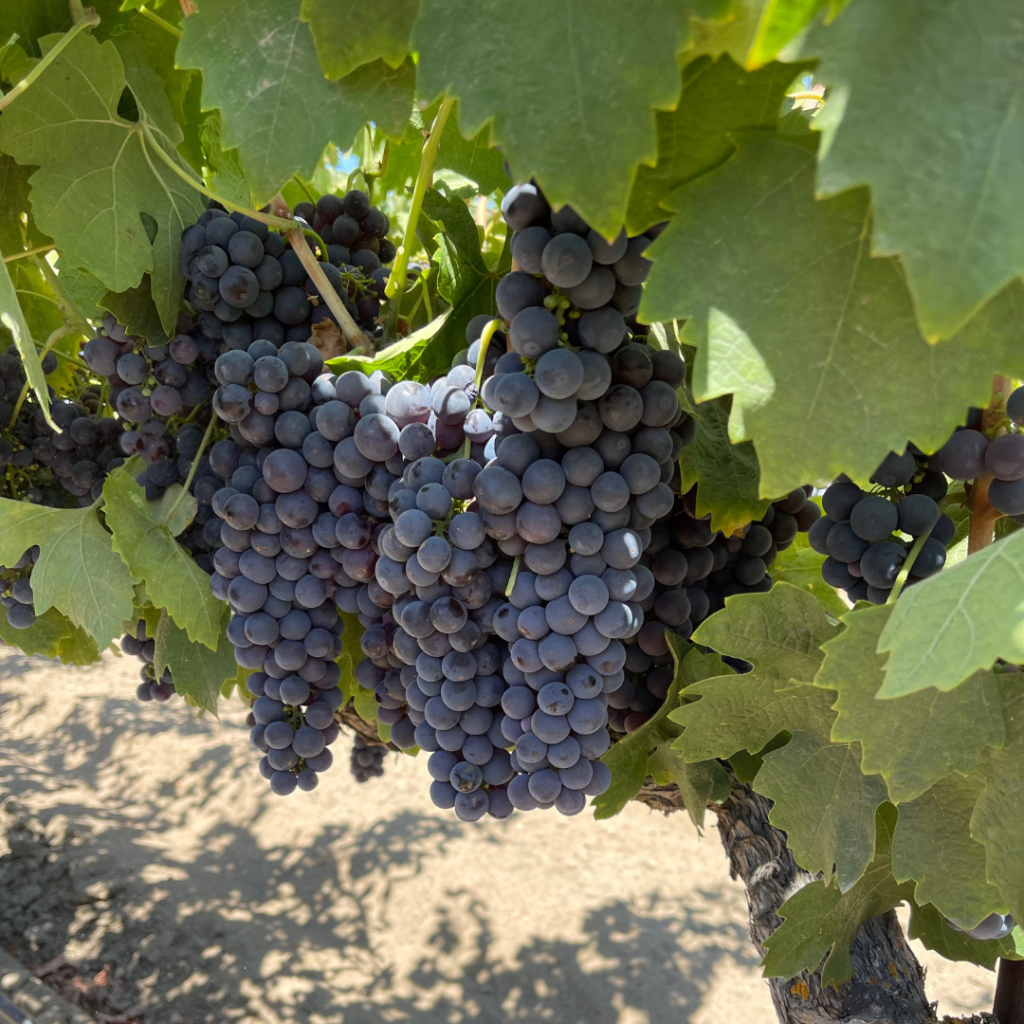
According to google, for a wine grape to be considered “old vine” it needs to be over 20 years old. After about 20-30 years, depending on how the vine has been taken care of, the vine usually will start to produce smaller clusters. These smaller berries are more concentrated and in turn, produce more complex fruit. This is the reason why winemakers go crazy over old vine grapes. The wine that you can make is unlike any other. Although there can be some challenges in the yield department, the wines created from old vines are luscious, complex, and pack a punch.
Fun fact – did you know grape vines can grow for up to 130+ years?!!
A big reason why you see so many Old Vine Zinfandel and Old Vine Primitivo in California is that those were the most widely planted grapes in the US originally. There are vineyards in California with Zinfandel vines that are over 125 years old! One of them is Costamagna’s Vineyards Old Vine Primitivo!!
There is something very special about walking through this Primitivo vineyard for fifth-generation farmer Berton Costamagna. “Since 1902 my family has been here in Lodi farming these wine grapes”, says Berton. “To think that my Nono (Great, Great, Great Grandfather) had the foresight to start a farming adventure back then, by planting his first vineyard of Primitivo here, and to see where it is now, is so inspiring to me.” With its sandy loams and ideal climate, farmers back then quickly saw the potential for growing wine grapes in Lodi, in the heart of California. Fast forward 120 years, and Lodi California has come to be known as the Zinfandel Capital of the World and is now one of the top-producing AVA’s in the world. The Costamagna family has continued farming their family’s clone of Primitivo for all these years for wineries and home winemakers to enjoy with their families. “These grapes make for a great wine, but what is truly special, is these grapes connect us to the hard work, traditions, and memories of my family before me. My hope is that folks can make as many memories drinking the wine from these grapes as our family has made farming them.” 🍇🍷 We can’t wait to receive these grapes from the Costamagna Family!
Interested in making Old Vine Primitivo? check in with us via sales@juicegrape.com or call us at 877-812-1137, follow us on Facebook, Instagram, and Youtube, or check out the Harvest Tracker and Winemaker Blog on our website- juicegrape.com.
Special Primitivo coming from fifth generation farmer Berton Costamagna

Special Primitivo coming from fifth generation farmer Berton Costamagna
There is something very special about walking through this Primitivo vineyard for fifth generation farmer Berton Costamagna. “Since 1902 my family has been here in Lodi farming these wine grapes”, says Berton. “To think that my Nono (Great, Great, Great Grandfather) had the foresight to start a farming adventure back then, by planting his first vineyard of Primitivo here, and to see where it is now, is so inspiring to me.” With its sandy loams, and ideal climate, farmers back then quickly saw the potential for growing wine grapes in Lodi, in the heart of California. Fast forward 120 years, and Lodi California has come to be known as the Zinfandel Capital of the World, and is now one of the top producing AVA’s in the world. The Costamagna family has continued farming their family’s clone of Primitivo for all these years for wineries and home winemakers to enjoy with their families. “These grapes make for a great wine, but what is truly special, is these grapes connect us to the hard work, traditions, and memories of my family before me. My hope is that folks can make as many memories drinking the wine from these grapes as our family has made farming them.” 🍇🍷 We can’t wait to receive these grapes from the Costamagna Family!
How to Order
We are an old school company. Give us a call at 877-812-1137 or email us at sales@juicegrape.com to get the ball rolling on your pre-order. Don’t forget, we can create custom fermentation templates for you if you would like!
If you aren’t local to New England and need your product shipped, please email sales@juicegrape.com for a freight quote. We will be shipping out of our Bronx, NY location – D’Arrigo. If you live in the Metro NY area and are interested in a freight quote please reach out to sales@juicegrape.com
Unfortunately, we cannot ship fresh juice. We can ship our sterile juices (Original All Juice (juicegrape.com)), they ship year-round without refrigeration. This is the best option for home winemakers who cannot pick up the fresh product from MWG’s facilities.
If you have a large fresh product order (2,000lbs and up), please contact sales@juicegrape.com for a freight quote.
For more information regarding the Fall Harvest please feel free to contact us at sales@juicegrape.com or give us a call at 877-812-1137. We are looking forward to helping you with your next great wine!
Sincerely,
Christina Musto
Musto Wine Grape Co.
Wine Grape Spotlight: Mettler Ranch Zinfandel
Wine Grape Spotlight: Mettler Ranch Zinfandel

When making Mettler Ranch Zinfandel you can create a wine with earthy and smoky aromas. Along with a complex medley of flavors including plum, blackberry jam, tobacco, anise, and sweet oak. The sturdy but softly integrated tannins yield to subtle oak notes (if you make an oak addition) as the wine lingers on the palate. These grapes create a wine full of Zinfandel personality! Winemaker Adam Mettler suggests some light French oak to add a little extra complexity.
If you can hold off drinking your wine right away and lay it down for 1-2 years it will only gain more of that zesty, delicious personality. If you’re interested in trying out a different Zin this year, Mettler Ranch is a great choice. Email sales@juicegrape.com or call the office at 877-812-1137 for more details on how to reserve these grapes.
The Mettler Family has been farming wine grapes since the 1800’s. Recognized in the Agricultural Hall of Fame, they are 8th generation grape growers in Lodi, CA. With over 800 acres farmed in Lodi county, some vineyards being upwards of 100 years old, these vines are meticulously managed and maintained. All of their vineyards are LODI RULES certified and some are Certified Organic through the CCOF (California Certified Organic Farmers).
Lodi has a classic Mediterranean climate with warm, dry summers and cool, moist winters. The dry warm summer days allow Lodi grapes to develop full, ripe fruit flavors while the distinctive breezes maintain the natural acidity for structure and complexity in finished wines.
The Mettler Zinfandel is sourced from their vineyards by the Mokelumne River, referred to as “Old Lodi.” The soil is sandy and this sub appellation is known for being an epicenter for Old Vine Zinfandel. The vines are 50 years old, sustainably farmed, and certified through LODI RULES.
Making Mettler Ranch Zinfandel (5-6 gallons):

Ingredients:
- 2-3 cases (36lbs) of Mettler Ranch Zinfandel grapes
- 1.6 gms of Potassium Metabisulfite
- 3mL of Color Pro
- 1 – 6gal package of Go-Ferm
- 1 – 6gal package of chosen yeast (see yeast suggestions below)
- 1 – 6gal package of Fermaid K
- 1 – 6gal package of Fermaid-O
- 1 – 6gal package of Malolactic Bacteria
- Optional Additives:
- 1 – 6gal package of Tannin FT Rouge
- 1 – 6gal package of Opti-Red
- 1 – 6gal package of Booster Rouge
- .9oz of French Oak Dust
Yeast Suggestions:
Equipment:
- 1- 6 gallon carboy
- 1 – 5 gallon carboy
- 1- 50LTR fermentation pail w/lid
- 1- Crusher Destemmer or utilize Musto’s Crush/Destemm service
- 1- Press
- 2 – Airlocks
- 2- Drilled Bungs to fit Carboys (#7)
- B-Brite
- Potassium Metabisulfite
- Racking equipment
- Hydrometer
- Thermometer
- Ability to test for Total Acidity (TA), pH, and MLF
- Must punch down tool or stainless steel spoon
Winemaking Steps:
- Sanitize and Crush and Destem – Inspect your grapes. Crush and destem into clean and sanitized food grade 50LTR fermenting tub. Always allow an extra 20% of volume for fermentation purposes as the wine will “expand” throughout fermentation. Always rinse your fermentation vessel with a sanitizing strength potassium metabisulfite solution (2oz/gallon or 3tbsp/gallon). Make sure that the sanitizing solution touches all the surfaces of the fermentation vessel and that the vessel is completely emptied out of all sanitizing solution after. Shake free any drops as best you can from the fermentation vessel. Having remaining sulfite liquid in the vessel will prohibit fermentation. Do not rinse the sanitizer off with water after sanitizing as that will reintroduce bacteria to the environment.
- Once all of the grapes are crushed, try to accurately measure your quantity of must. Add ¼ tsp of potassium metabisulfite for every 5 gallons of must that you have. Mix up the must thoroughly.
- ALWAYS record the additions you make to your grape must!
- Wait for 6-8 hours after the sulfite addition and then add color pro to the must. Always mix it with water to create a 10% solution (if you use 5mls of enzyme, mix it with 45mls of water). The water allows it to better circulate throughout the must. Allow the pectic enzyme to work for 12 hours before yeast set.
- Twenty four hours after crushing the grapes, mix the container thoroughly and take and record your measurements. Measure Brix, pH, and TA. If you need to adjust your must at all, this is the time to do it. Ideally your Brix should be between 23-28 degrees, the pH between 3.4-3.7, and the TA between 6-7g/L. Your initial Brix reading, multiplied by .55, will give you a close estimate of your ending alcohol by volume percentage.
- If you would like to use fermentation tannins (FT Rouge, oak dust) or fermentation nutrients such as Opti-Red, add them after measurements and adjustments have been made. Mix any of these ingredients in thoroughly.
- After measurements have been taken and any adjustments have been made, it is time to set yeast if you are using a cultured yeast strain. Follow the yeast set directions on the packet explicitly.
- After you get to temperature and add your yeast, you may cover the vessel lightly with an old sheet or towel or place the lid gently on top of the bucket.
- Obtain a must punch tool, a long stainless steel spoon, or your bare hands, and sanitize your tool or hands with sulfite sanitizer. This is what you will use to “punch down” or mix up the must three times a day. Try to mix everything very well, pushing all of the skins back down to the bottom, getting them very wet, and bringing up the piqued from the bottom. This should be done as often as possible, preferably three times a day. [Before work (7am), after work(5pm), and before bed (10pm)] When punching down every evening, take a sample of the liquid and using your hydrometer, track the Brix depletion. You should notice a drop in Brix daily. Always record your additions to your must, your brix depletion, and punch downs.
- If you are using additional yeast nutrients to assist in fermentation you will add them after fermentation has started. Fermaid O is added at the beginning of fermentation (1 day after yeast set) and Fermaid K will be added at 1/3 depletion of the Brix (2/3 of the beginning amount of Brix). Follow the directions for the individual yeast nutrient, hydrating with water and mixing thoroughly.
- If you are adding malolactic cultures to your wine, you may also chose to do this at 1/3 Brix depletion. Follow all directions on the bacteria and nutrient packets explicitly.
- Punch down and take Brix measurements daily. When your hydrometer reads 0.90, you have fermented to dryness. At this point your malolactic fermentation may still continue, but the primary alcoholic fermentation is complete. You may now press the wine. Wash the press and sanitize using potassium metabisulfite. Again, make sure the press does not have any excessive puddles or lingering amounts of sanitizing solution remaining. Sanitize the receiving container carboy and any pumps or tubing that you may use. Anything that comes into contact with the wine should be rinsed with sulfite sanitizing solution. Place a screen (also sanitized) inside of the press to hold back any extra skins or seeds from getting through. Start scooping up the must and placing it in the press. Some of the liquid will immediately flow through, this is the “free run”. When the press is full, slowly begin pressing. Do not try and press every last drop out of the must as this can lead to seed cracking and bitterness in the wine. Fill each container to within ½” of the top and secure a bung and airlock in place. Malolactic fermentation will exude a small amount of carbon dioxide and there will be trapped gas within the wine that will need to escape the container.
- Allow the wine to sit for 2-3 weeks. You can conduct malolactic chromatography or bring a sample to a winemaker at Musto Wine Grape for analysis to ensure that your secondary fermentation is finished. At this point you should see a nice thick layer of lees in the bottom of the carboy. You will want to place the full vessel onto an elevated surface such as a table and place the new, sanitized, empty vessel on the floor below. Using a sanitized siphon, rack the wine into the new carboy. You may have space at the top which will need to be “topped off” with more wine. You can either use wine from another container, or finished wine to do this. It is very important that there is less than a 1/2” of headspace in each container. At this point you should also add 1/4tsp of potassium metabisulfite per 5 gallons of wine.
- Now it is time to let your wine age. You will need to rack it and add additional SO₂ every 3 months. Make sure you sanitize all equipment and containers when racking and keep them topped off within ½”. Come visit Musto Wine Grape for bottling advice and supplies.
For more winemaking details check out the posts below:
- Adjusting your grape must
- Racking your wine
- Post fermentation tips
- Finning agents and why they help
- Aging your wine
- Finishing your wine
Awards won by Mettler 2017 Lodi “Epicenter” Old Vine Zinfandel:

- 93 Points, Best of Class & Gold Medal – 2019 Los Angeles Wine Competition
- 91 Points – Wine Enthusiast Magazine (February 2020)
- 91 Points & Gold Medal – 2019 Sunset Int’l Wine Competition
- 91 Points – 2019 California State Fair
- Gold Medal – 2018 San Francisco International Wine Competition
If you are interested in purchasing wine grapes or winemaking juices this fall please email sales@juicegrape.com or call 877-812-1137 for pricing and information. We are looking forward to speaking with you about your 2020 vintage!
2019 Wine Grape & Juice Harvest Report
Harvest should begin in Central Valley around August 28th with grapes and juices arriving after Labor Day. This year’s crop has had moderate temperatures all summer and our grapes look fantastic. The crop is looking to be of normal size with normal ripening and tentative harvest dates.
2019 Wine Grape Update:
Suisun Valley: The Lanza-Musto Vineyards Petite Sirah is thriving! Developing into a colossal, intense grape, our Petite Sirah is looking to be one of the top grapes of 2019. The Suisun Valley grapes should start harvesting around the 3rd week in September. Did you know that Lanza-Musto Vineyards has been certified by the California Sustainable Wine Growing for our vineyard practices? This is a certification that happens every year where we must uphold the standards of sustainable wine grape growing.
Lodi: We have a new Ranch coming on board with us this year from The Mettler Family. Mettler Family wines is home to brother and sister – Adam Mettler and Kelly Costamagna. Adam was recently named winemaker of the year and Kelly runs the wine distribution end of the business. Some of you might have met Kelly at our Winemaker Dinner last winter. We will have a lot of interesting wine grape varieties coming out of the Mettler vineyards such as Viognier and Pinotage. We will also have some wonderful Old Vine Zinfandel from Zinderella, see the vineyard by clicking HERE and other high quality grapes from the Costamagna Vineyards. The Mettler Family, Zinderella, and Costamagna Vineyards have all been certified by the LODI RULES Sustainability program! You’ll be able to tell by the special seal on the label. We have put together a blog post that explains how the LODI RULES Sustainability certification works. Click HERE for more information.
Central Valley: These will be some of the first grapes on the dock! The Central Valley grapes are hitting 19 and 20 Brix! It will only be a matter of time before they arrive. One of our Ancient Vine grape growers walks us through the vineyard during verasion. Click HERE to see how the wine grapes are developing. We will have Ancient Vine Alicante, Carigane, Grenache, Barbera, and Muscat available this fall. Also, Frank Musto’s Black Muscat will be rolling this season. Ask Christina about how to make Black Muscat wine, she made a batch this past fall! Also, the King’s River, Tempranillo is looking delicious. We had a lot of great feedback on this variety. If you’re looking for something new to try, check it out.
Washington State: We will have three vineyards providing fruit for us from Washington State this year! Our Rattlesnake Hills Vineyard, and our newest Wahluke Slope and Red Mountain Vineyards. We are very excited to bring these new vineyards to you. Check out our Cabernet Franc and Cabernet Sauvignon and see what these new vineyards have to offer!
New offerings for 2019: Russian River Pinot Noir (will probably be the only season we will be able to receive this awesome fruit!), Sonoma Attwood Ranch Cabernet Sauvignon, Contra Costa Italian grape varieties, Paso Robles grapes, and additional Ancient Vine offerings.
Give us a call or shoot us an email to discuss your 2019 wine! 877-812-1137 – sales@juicegrape.com
2019 Wine Juice Offerings:
California: We have many labels of high quality juices coming in from California this fall. Cry Baby, Bella California, Lodi Gold, California Select, and Colina del Sol, just to name a few. The fresh juices are stored at 35 degrees and arrive as if the juice just came out of your wine press. You can either hit the juice with SO2 and inoculate with your chosen yeast, or you can let the juice warm up and ferment using the native yeast found in the skin of the crushed/pressed grape.
Fresco Juices: Mosti Mondiale Fresco is proud to be the only product to offer home winemakers their own vineyard in one unique package. Each pail is carefully pre-balanced, inoculated with the perfect yeast, and infused with liquid enzymes to help create a delicious and palate pleasing wine. The Fresco juices come from California, Austrailia, and Italy.
Italian Juices: Our Italian juices will arrive in late October. The Italian juices are always full of flavor and provide palate pleasing, age worthy wines.
Give us a call or shoot us an email to discuss your 2019 wine! 877-812-1137 – sales@juicegrape.com
We know that was A LOT of information. If you have any questions or would like to discuss your potential order, please do not hesitate to reach out. We look forward to helping you with this year’s vintage!
Sincerely,
The Musto Crush Crew
877-812-1137 – sales@juicegrape.com
Juices and Grapes In Stock as of 9/12
| Variety | Label | 36/42lb |
| Alicante | O’Capro | 42lb |
| Alicante | California Special | 42lb |
| Barbera | Valley Beauty | 36lb |
| Barbera | Teaser | 36lb |
| Barbera | Cry Baby | 36lb |
| Black Muscat | Lodi Gold | 36lb |
| Cabernet Franc | Cry Baby | 36lb |
| Cabernet Sauvignon | Cry Baby | 36lb |
| Cabernet Sauvignon | Pia | 36lb |
| Cabernet Sauvignon | Caterina | 36lb |
| Cabernet Sauvignon | Costamagna | 36lb |
| Chardonnay | Costamagna | 36lb |
| French Colombard | Cry Baby | 36lb |
| Gamay | Pia | 36lb |
| Grenache | Regina | 36lb |
| Grenache | Lugano | 36lb |
| Grenache | Pia | 36lb |
| Grenache | Teaser | 36lb |
| Malvasia Bianca | Cry Baby | 36lb |
| Merlot | Lucerene | 36lb |
| Merlot | Lodi Gold | 36lb |
| Merlot | Lanza-Musto | 36lb |
| Muscat | Muscat King | 42lb |
| Muscat | Cry Baby | 42lb |
| Petite Sirah | Pia | 36lb |
| Petite Verdot | Musto – Paso Robles | 36lb |
| Pinot Noir | Lodi Gold | 36lb |
| Pinot Noir – YOLO | Lodi Gold | 36lb |
| Pinot Noir | Musto –Paso Robles | 36lb |
| Primitivo | Lanza-Musto | 36lb |
| Ruby Cabernet | Caterina | 36lb |
| Ruby Cabernet | Caterina | 36lb |
| Sangiovese | Caterina | 36lb |
| Sangiovese | Regina | 36lb |
| Sauvignon Blanc | Lanza – SOLD OUT | 36lb |
| Syrah | Cry Baby | 36lb |
| Thompson Seedless | Miss Seedless | 42lb |
| Thompson Seedless | Treasure | 42lb |
| Thompson Seedless | Cry Baby | 36lb |
| Viognier | Lodi Gold | 36lb |
| Zinfandel | Valley Beauty | 36lb |
| Zinfandel | Valley Beauty | 36lb |
| Zinfandel | Zinderella | 36lb |
| Zinfandel | Lucerene | 36lb |
| Zinfandel | Teaser | 36lb |
| Zinfandel | Pia | 36lb |
| Old Vine Zinfandel | Lugano | 36lb |
| Old Vine Zinfandel | Caterina | 36lb |
| Old Vine Zinfandel | Lugano | 36lb |
Juices in Stock as of 9/12/2016:
| Variety |
| Alicante |
| Barbera |
| Burgundy |
| Cabernet Sauvignon |
| Chablis |
| Chardonnay |
| Chianti |
| French Colombard |
| Gewurtztraminer |
| Grenache |
| Malbec |
| Malvasia Bianca |
| Merlot |
| Mixed Black |
| Petite Sirah |
| Pinot Gris |
| Pinot Noir |
| Riesling |
| Ruby Cabernet |
| Sangiovese |
| Sauvignon Blanc |
| Syrah |
| Thompson Seedless |
| Viognier |
| White Zinfandel |
| Zinfnadel |






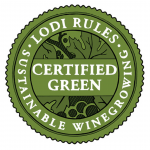


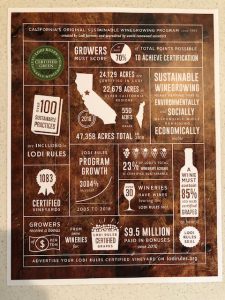
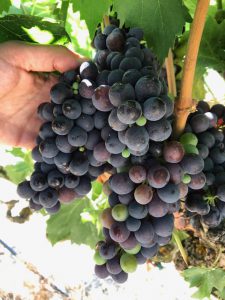

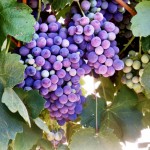
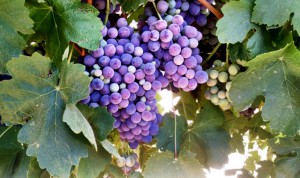
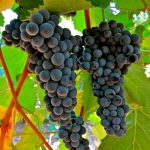
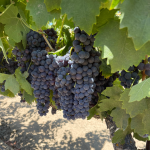
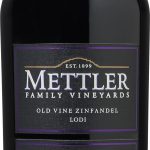
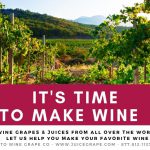

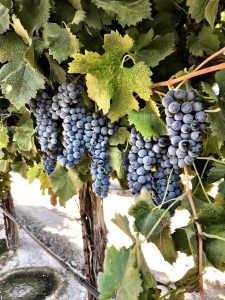
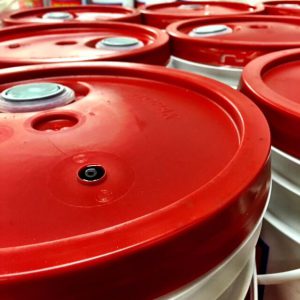
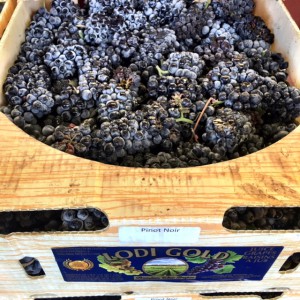
Recent Comments